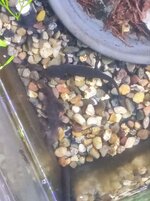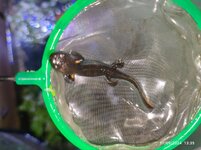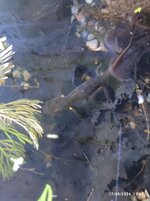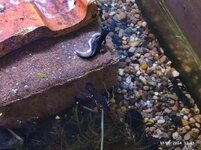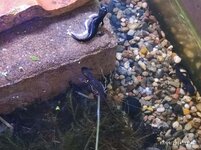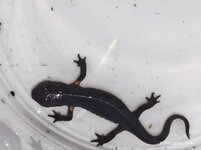There are a lot of different strains of C. orientalis in the hobby. Maybe some of them aren't even C. orientalis and even a different species which isn't described yet. Maybe it's just a different appearance due to locality. I've got a strain (J. Jansen) which has little green green specks over it's entire body and it's blue/grey (even a little blotched) instead of black. I will probably never know if it's C. orientalis or another species, so I won't mix this strain with other C. orientalis strains just to be sure.
Yes, I checked the species list in your signature last night. You really, really like the black and red look, don't you?

So many firebelly species I've never heard of before. I'll be receiving c.e. popei later this year from the Netherlands.. probably direct relatives of yours? What a beautiful animal.
I will probably never know if it's C. orientalis or another species, so I won't mix this strain with other C. orientalis strains just to be sure.
Can a normal hobbyist really ever tell? I got mine from a random private owner who gave up his hobby and said they'd had them for ages. Seemed like they bought them in a pet shop long ago, but at the time I didn't think of asking. I quickly managed to pick up on the difference between the Chinese and the Japanese firebelly, but had no idea there would be more subspecies. It actually takes a while of digging to find out about their existence.
Don't some smart science people do genetic analysis on newts? I know the botanics hobby has the same issue with long debates whether some localised forms are their own subspecies or not.
Even if they are the same subspecies, mixing them seems like a bit of a waste of a potential breeding opportunity..
By the way, aren't you worried about your J. Jansen.... going extinct in aquariums? I mean, there aren't many breeders of them, right? Shouldn't it be our mission to create as many colonies in european households as possible? (of course, restricted to owners who will properly provide for them)
maybe I'll get a decisive "NO!" back, but as far as I understand, aquariums may be an important step to species survival. ..?
Edit: I think I might end up doing it and separate the funny-colored ones. Will report back on progress in 20 years I guess...

